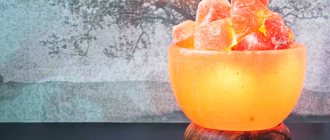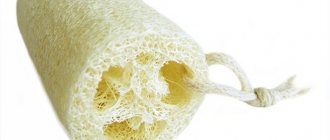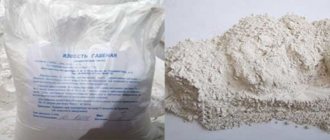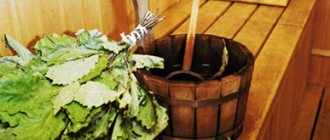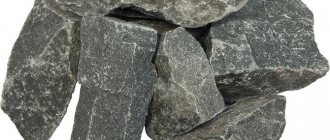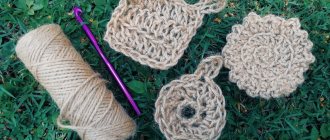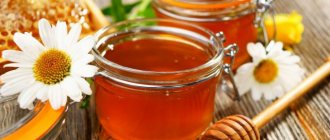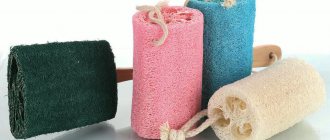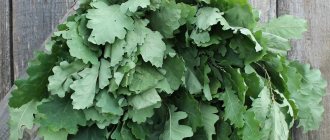I was sure that I had never used or washed a natural bast washcloth. Imagine my surprise when my mother dispelled my beliefs. It was with a bast washcloth that I was washed as a child; this shapeless tow was used for washing in our black bathhouse...
A disheveled bunch of an incomprehensible light brown color, spreading in different directions - this is a real bast washcloth!
In ancient times, people did not stand on ceremony with bath accessories. We didn’t choose everything in the same color scheme, we didn’t choose gentle washcloths, we didn’t look for fragrant soft soap, the shampoos were the simplest.
What is bast
Bast is the inner fibrous side of the linden bark, that is, its fragile subcortical part.
The top layer of linden bark is peeled off and the resulting thin light material is cut into thin strips, from which a natural bath attribute is obtained.
But not only linden bast is used to make washcloths. You can use the bast of any young deciduous tree for the loofah.
Varieties of luffa
There are more than 50 species of luffa, but only two types of plants have become widespread. Other types of plants produce too small fruits and require quite a lot of care. Therefore, it makes no sense to grow them
- Luffa ribbed
The young fruits of the ribbed luffa are used for cooking. It is stewed, boiled, and added to other dishes. It can be eaten raw and even canned. The pulp of young shoots is juicy and sweetish (very similar to the taste of cucumber).
When is the best time to harvest bast?
It is best to prepare the future washcloth from bast in the spring. At this time, the tree is gaining spring sap, its bark is tender and soft. But when it dries, it coarsens, becomes hard and tough.
Therefore, when the bast is cut, it is soaked in water to make it more soft and flexible.
Then the strips are collected into a bundle, which can be tied - this is how you get a washcloth. Agree, everything is quite simple...
Loofah - a useful plant
The loofah plant is a genus of herbaceous vines in the Cucurbitaceae family. It grows naturally in regions of Asia and Africa. Is it possible to grow this plant here in Russia? Of course you can, it grows very well in the southern regions by sowing seeds in the ground. In our Volga-Vyatka region and central Russia, loofah is grown using seedlings. But more on that later.
Loofah, an annual beautiful and branched plant - liana. The shoots reach a length of 5 meters. The fruits grow up to 70 cm long. It can decorate and shade a gazebo, form a beautiful hedge, and you will get washcloths from its fruits and wonderful cosmetics from its stems and leaves. Young, unripe fruits are eaten, and folk medicinal drugs are prepared from them.
Eating unripe fruits helps strengthen the immune system and helps fight flatulence and bloating, treat chest cough, and increase lactation in nursing mothers.
Where is bast used?
Bast is not just washcloths. From time immemorial, bast was used to weave bast shoes, household utensils, baskets, boxes, and so on...
Lyko became so firmly established in the lives of Russian peasants that it would be difficult to imagine their life without him.
There are quite a lot of proverbs and sayings associated with bast. For example, our everyday saying: “The bast does not knit.” This means that a person is drunk to such an extent that he cannot cope with an ordinary, simple task.
Shoes and household items made from bast were considered a sign of the poor and of simple origin. When they said about a person: “Girded with bast” or “Woe is bast” - this meant that the person lived in poverty.
The bast washcloth is one of the oldest. These are the types of washcloths that have replaced “disposable cleaning agents.”
Pine wool and other types of this material
Natural wool was a fluffy mass of fibers of various origins: cotton, plant fluff, hemp, flax and even pine needles (mainly pine). In addition to plant materials, animal materials were also used: wool, natural silk and down. Naturally occurring mineral wool was made from asbestos.
The source of raw materials for the manufacture of artificial wool was less extensive: viscose, shellac, glass, metal, basalt. Perhaps this may look a little strange: basalt wool, but first things first.
About disposable washcloths
Initially, the role of a washcloth in a bathhouse was performed by a bunch of straw or ordinary grass. Grass or hay was collected in a bunch, doused with warm water to wash away possible contamination, and the simplest bath attribute is ready for cleansing procedures!
Everything would be fine: the herbs are good for the skin, and the hay smells like summer. Disposable washcloths are individual, they are not capable of transmitting infections and diseases to other visitors to the bathing kingdom.
But such washcloths do not have reliability, rigidity, or long service life. So the bast soap came to the rescue, it rubbed conscientiously and lasted much longer than disposable washcloths.
Medium hard sponges
This is ideal for all skin types. Gently exfoliate, remove impurities, but do not damage the upper layer of the epidermis. This washcloth is suitable for massage and activates blood circulation. Frequent use is not recommended for people with sensitive skin.
KAI Body washcloth – towel with plant fibers
The washcloth is made in the form of a towel measuring 100 by 30 cm. It washes well, opens pores, and forms lush foam. Made from cotton fabric with the addition of hemp fibers.
Has a massage effect and increases blood circulation. Can be used for sensitive skin. Wash with soap and shower gel. May cause allergic reactions.
Pros:
- natural material;
- can be folded and used as a sponge;
- easy to wash, dries quickly;
- medium hardness.
Minuses:
- difficult to adapt to size;
- expensive.
OH:E Cure series - 100% nylon
This towel measures 100 x 28 cm. Made from nylon fiber. Has a massage effect, cleanses, opens pores. But it does not injure even thin skin, but invigorates, makes it smooth and soft. The fabric is thin, easily bunches up, and creates a lot of foam. Suitable for daily use.
Pros:
- convenient to use;
- foams any soap well;
- easy to rinse;
- convenient to take on trips - lightweight, dries quickly;
- resistant to high temperatures;
- strong and durable.
Minuses:
- some find it too soft and thin;
- difficult to get used to because of the size;
- expensive.
Properties of bast sponge
Any natural washcloths are hard! They do an excellent job of deep cleaning pores. The phytoncides for which linden bast is famous kill all microbes that it encounters on the skin!
The bast sponge has an excellent scrub effect that lasts until the last days of its service, but there are also some inconveniences when using it...
The fact is that thin strips are not physically prone to excessive foaming.
Often, manufacturers do not give the bast a specific shape, and when you buy it in a bag, you will be greeted with the usual bunch of thin strips connected by the bast strip itself.
To make washing in the bathhouse a pleasure and for you to feel a shapeless tow in your hands, I suggest making your own washcloth from purchased bast material.
The strips can be tied into a braided shape, or they can be sewn onto a piece of fabric, or they can simply be secured on both sides with a rope.
The bast sponge has one more not very pleasant property - it comes out. When rubbing and lathering, tiny pieces and hairs fall off in large quantities.
Cleaning the bathhouse after using a washcloth will be a must!
Important! If you decide to use a bast sponge at home in the bathroom, the bast can clog the entire drain. Be careful!
And of course, any natural washcloth must be dried thoroughly! Bacteria and microbes love to live in a moist, natural environment - this is paradise for them!
Due to such proximity, natural washcloths often rot, acquire an unpleasant odor and do not last long. The washcloths need to be dried, and before use, be sure to steep them in boiling water so that they fluff up and become soft.
If we don't wash, we'll go for a ride? A little history of “soap-snout” accessories
And all because in the Middle Ages, any touching of the body was considered a sin, so people tried to do it as rarely as possible. And in general they had no time for trifles. But did our ancestors wash themselves somehow? Of course we washed. Otherwise, humanity would have died out long ago from infectious diseases or would have been eaten alive by insects. But who does what? That’s another question.
The first records on cuneiform tablets told about how ancient people washed themselves 4000-3500 years ago. The poor used ash and fine river sand to remove dirt, while the rich got rid of it with a wooden or bronze scraper. In Ancient Rome and Greece, adhered dirt was scraped off with a special sickle-shaped instrument called a “strigil.” These scrapers were made of ivory, crocodile teeth, wood or metal.
Mediterranean people used local natural sponges. After processing, only a porous skeleton remained, which was used as a washcloth. During the era of great geographical discoveries, a Caribbean sponge, which is tougher and better than the Mediterranean one, was brought to Europe along with other overseas items. In the twentieth century, many different soaping devices appeared. Washcloths began to be made from hemp ropes and various fibrous wood structures.
Foam rubber, which was used to make sponges, was invented in the 1930s. Rubber sponges that imitate the pores of natural sponges appeared after World War II. In the 1960s, massage shower brushes of various configurations came into fashion. At first they were made from natural hair, and then they began to be equipped with nylon bristles. Look into your bathroom, what is hanging there, so shaggy, on a cute hook? That's right - a washcloth. Although some people in that place can find hoses from an old washing machine, dirty towels and torn sneakers.
It always seemed to me that the color and quality of intimate hygiene items can tell a lot about the owner. For some, these are incredibly bright “fluffies” knitted from acrylic fiber, and for others, they are “retired”, worn to holes. Nowadays, mitten washcloths made from sisal, a natural fiber from the Mexican agave plant, are fashionable, as well as from loofah, a herb from the pumpkin family.
Even children know that they also need to brush their teeth sometimes. Otherwise, after a while, those around you within a radius of three meters will fall dead. As for how to clean it, everyone decides for themselves. Some scientists claim that the ancient Romans used dried human urine as toothpaste. For its “production”, special young slaves were used, who were fed accordingly and did not bother with hard work.
When and where a product for cleaning teeth first appeared, history is silent. It is only known that humanity began to brush their teeth much later than to wash with a washcloth. At least Neanderthals had no such worries.
But the ancient Egyptians (regardless of castes and classes) successfully fought against bad breath. For this purpose, a paste was mixed from ash and eggshells with the addition of myrrh. And since they had not yet thought of toothbrushes, the composition was rubbed into the teeth and gums with a finger. Residents of India, Ancient Greece and Rome, as well as pre-Columbian America used the resin of coniferous trees. And the pagan Slavic tribes used birch charcoal, which they chewed mixed with mint leaves and spruce needles.
The Dutch scientist Antonius van Leeuwenhoek, the discoverer of red blood cells and male reproductive cells, was distinguished by the fact that with the help of a microscope he found so-called animacules (“little animals”) everywhere: in dirty water, in human secretions and even on his own teeth. It was he who suggested brushing your teeth with table salt at the end of the seventeenth century. Which is what all of Europe did over the next 200 years.
Tooth powder containing calcium carbonate and sodium bicarbonate has been in use since about 1850. But with the advent of toothpaste in tubes abroad in the 30s, it was quickly abandoned. The same cannot be said about Russian citizens. Despite the appearance of the legendary “Pearl” toothpaste in the Soviet Union in the post-war years, our compatriots persistently used tooth powder right up to the end of the 80s.
There are so many things they don’t add to toothpastes these days—fluoride, pearl powder, and extracts of exotic plants—to make our smiles more radiant. Meanwhile, dental clinics are thriving. You can’t help but think, maybe go back to dry urine and pine tree resin?
Tags: toothpaste, teeth, washing, toothbrush, bathroom
Bast washcloth and delicate skin
If you are a fan of rich foam, soft, gentle washing, you are unlikely to like this natural washcloth. It will also not cause great delight among small children.
A bast for those who like to rub their skin until it’s red and squeaky clean.
If you have been actively sunbathing and have acquired an incomparable bronze skin color, do not use a bast washcloth - use fluffy soft sponges. And when the turn of autumn and winter cold comes, then you can use a bast washcloth to disperse the blood!
To combat the eternal female problem (cellulite), there is no better option than a bast washcloth. Natural rigidity is an ally in breaking up unnecessary deposits on the hips.
This is the bast washcloth that Mother Nature and the beautiful linden gave us. If you don't believe me, try it yourself! Good luck to you!
Loofah - how to grow a natural loofah
- We buy loofah seeds, there are a great variety of them, the “Cylindrical” variety is recommended, it is well suited for making washcloths.
- The technology for growing loofah is similar to growing cucumbers. It does not like replanting, is moisture-loving, and does not bear fruit well when planted thickly.
- We sow the seeds in separate peat cups from early March to mid-April; planting dates depend on your climate. In the Kirov region, we plant loofah seeds in early April.
- Make sure that the soil is always moist and the temperature before emergence is high, 25-30 degrees. When shoots appear, move the cups to a cooler place.
- Seedlings that have reached 40 days begin to harden. When the weather is warm and the nights are warm, they are planted in the ground on the south side.
- Loofah is very sensitive to soil; it loves and bears fruit well in loose, light and nutritious soil. Prepare the area for it in the fall, add humus and ash.
- We prepare a hole, pour humus into it and mix it with soil, transplant the seedlings carefully, without destroying the lump of earth where the roots are located. The root system of the loofah is superficial; it is recommended to immediately place a support for the plants, and as it grows, stretch the nets or guide the plant along a gazebo or a special arch.
- The distance between plants should be at least 1.5 meters; it grows very much, and when planted thickly, it does not produce a good harvest. When reaching 5 meters, the middle branch must be pinched, this will increase the yield.
- We feed the plant 1-2 times a month, add 1 liter of mullein and 0.5 liter of ash to a bucket of water.
- We don’t let the soil dry out, but we also don’t allow it to become waterlogged.
This is how you can grow this wonderful and beautiful loofah plant.
A bast hangs on a stake
The saying about the mop has real roots. Having removed the young bast (which means bast) from the tree, it was placed in ditches filled with water for soaking - mochila. They were placed near forest streams and rivers. By autumn, it was hung out to dry, and then carried through the snow on a sleigh to the village. When thoroughly soaked bast was tied into bundles, it disintegrated into many fibers.
Sometimes this happened while it was drying out. Such fibers can be seen at the market or agricultural fair. In Rus' they are called “mochalo”. This is where the word “wetten” comes from, that is, cut into small fibers so that the previous shape is lost.
There is no Russian bath without a sponge and a broom. This eco-friendly material was used for massage, and our ancestors did not know the disease. The tradition of washing with a washcloth is very ancient. Brushes and brushes were made from bast bundles, they were used to whitewash stoves and fences, clean kitchen utensils, twist ropes, and make coarse threads that were used to sew together nets for fishing.
Dolls were knitted from bast, and not only for children's games. In the peasant hut there were many amulets: a large doll, lovebird dolls, a swaddling doll, a kuvadka, a small egg. There was a doll for every event in family life.
Not only fishing nets were woven from bast, but also horse harness, matting, and in Germany even raincoats. In the old days, upholstered furniture was stuffed with bast. Instead of refrigerators, they used linden containers. Tueski wove according to the example of bast shoes. They are good for storing butter and caviar.
Sponges
Body wash sponges come in different hardnesses and are made from natural or synthetic material. Feature – they absorb detergents well and create abundant foam. After use, sponges must be rinsed and dried well.
Fresh idea Massage – with anti-cellulite effect
Sponge made of dense, large-pored foam rubber. Foams soap well, creating a stable foam. On one side the surface is smooth and even, on the other there is a massage layer with an anti-cellulite effect.
It's wavy and cleanses and exfoliates well. The sponge size is 14 by 9 cm, height 5 cm. Therefore, it fits comfortably in the hand. Easy to wash, dries quickly.
Pros:
- cleanses;
- creates a massage effect;
- does not scratch the skin.
Minuses:
- may cause irritation and itching;
- not suitable for sensitive skin.
Kokubo LADY`s Fish – medium hard
Sponge in the shape of a fish with a massage effect. Exfoliates dead skin cells and can be used for peeling. Two-layer, medium hardness, quickly foams even a small amount of soap. Massages, improves blood circulation.
An interesting shape creates a good mood. It dries easily and is conveniently attached to the shelf using a cut.
Pros:
- massage effect;
- creates a lot of foam;
- comfortable to hold in hand.
Minuses:
- no loop;
- Not tough enough for peeling.
Silva natural (SW 272) – made from loofah
A hard, natural cylindrical sponge made from a plant. Size 13 by 8 cm. Provides deep peeling, cleanses pores, and has a massage effect. Can be used for anti-cellulite massage, as it activates blood circulation and metabolic processes in the skin.
If soaked in hot water for 15 minutes, it becomes soft. Luffa does not cause allergies, but is not suitable for people with sensitive skin, moles, and skin diseases.
Pros:
- natural material;
- holds foam;
- massages, has anti-cellulite and lymphatic drainage effect;
- cleanses;
- strong, durable;
- Convenient loop for storage.
Minuses:
- hard;
- needs to be softened before use.
Hard and soft
Bast washcloths are thin strips of bast that can be tied into a bun or sewn onto a fabric base. The bast itself is made from the inner bark of linden or other deciduous trees. Bast sponges are good for baths, but they are not recommended for use in ordinary bathrooms: the material crumbles and can clog the drain.
Suitable for: bast is a fairly hard material, so it can be used for deep cleansing of the skin. The washcloth can be softened a little by dipping it in boiling water for 10-15 minutes before use.
It is better not to use if you have delicate skin or if you prefer to shower with foam - the bast washcloth does not foam well.
Loofah (sometimes spelled luffa) has recently become a popular material for bath accessories. It is a dried vine fruit that has been freed from the skin and seeds. Loofah can be found in the form of a roll, cut into pieces or “packed” in soap.
Who is it suitable for : the loofah is quite hard, so it can be used for peeling and anti-cellulite massage during water treatments.
It is better not to use for people with delicate skin and those who want to maintain a tan longer - a hard washcloth quickly erases the top layer of skin.
Linen washcloths are famous for their durability, ability to absorb water well and lather well. Items for water procedures can be knitted from linen threads or sewn from linen. In the second case, a piece of soap is sometimes placed inside the washcloth.
Suitable for : lovers of foam bathing and allergy sufferers.
It is better not to use for people with particularly delicate skin.
Sisal fiber is also used to weave washcloths, which are quite stiff, but have enviable strength.
Suitable for : those who want to get rid of dead skin on their elbows and heels.
It is better not to use if you have sensitive skin.
Bristle brushes of different sizes and different hardness are suitable for the whole body: with an accessory on a long handle you can scrub your back, small brushes will clean your fingers and feet.
Suitable for : Those who like a good back rub
It is better not to use for those with sensitive skin, or choose especially soft bristles.
A brush with natural bristles is suitable for washing rough skin. Photo: pixabay.com
The sea sponge differs from other natural washcloths in its softness, but its service life is short, and the price may seem quite high in comparison with other bath accessories.
Suitable for : Those with delicate skin.
It is better not to use if you are not prepared to take very good care of the washcloth and change it often.
